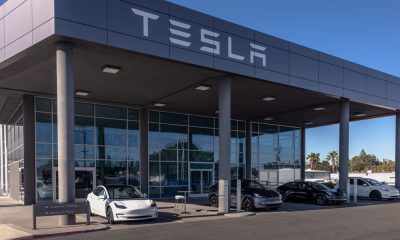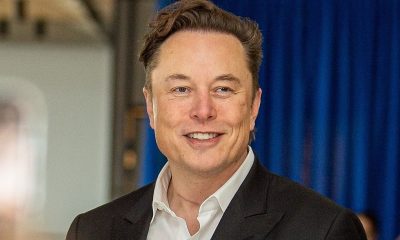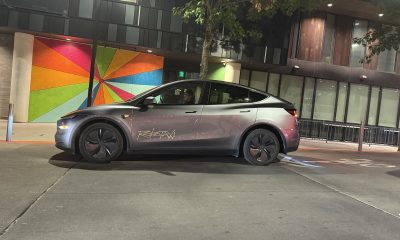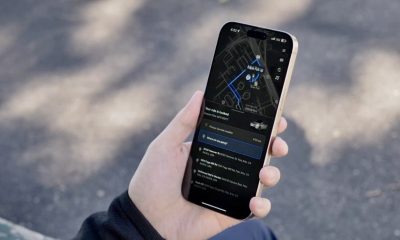Investor's Corner
Wall Street’s reaction to Tesla’s proposed buyout of SolarCity
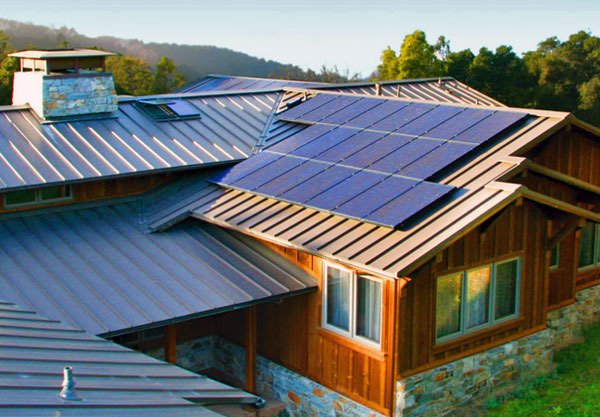
Since the proposed deal of Tesla to acquire SolarCity in a stock exchange with no cash involved was announced, a flurry of reports flooded the Internet, pretty much with many Wall Street reporters and pundits decrying the proposed deal as “crazy”, “not a no-brainer”, an “eclipse”, “plot of video game”, “sounds nuts”, but also with a few noting that Elon was “creating a clean energy empire” or “offering a one-stop shop.”
At the same time, the after-market reaction was swift: TSLA stock plunged 12% and SCTY stock rose 18%. This action was predictable. Since the Tesla – SolarCity deal is an exchange of stock, no cash deal, when adding about 12 million new shares, an 8% dilution of TSLA stock will occur. This dilution covers the majority of TSLA stock drop. Another negative factor is going from $2 billion of TSLA cash flow losses to $4.8 billion of cash flow losses of the combined companies, an increase of over 130%. Thirdly, TSLA debt will double after the deal. So a 12% drop should not leave anyone surprised.
Similarly, the assured “premium of approximately 21% to 30% over the closing price of SolarCity’s shares,” as stated in the letter to Lyndon Rive, pretty much matches the 29 percent rise of SCTY in extended trading, also matching SolarCity’s average 12-month price target of $29.82 among analysts surveyed by Bloomberg. So the stock action of both TSLA and SCTY was completely predictable.
Looking at the reporters / pundits comments, Bloomberg was the outlet with the most reports, 4 in all.
Tom Randell of Bloomberg reported in “Musk Buys Musk: Tesla’s SolarCity Deal by the Numbers”, that “ either Musk is bailing out a beleaguered company that’s run by his cousin, Lyndon Rive, or he’s consolidating a clean-energy empire at rock-bottom prices. Or both.”
Tom is one of the most bullish on the deal, saying that “It allows Musk to integrate the three-legged stool of clean energy in a way the world has never seen: electric cars, solar power, and grid battery storage all in one place. If so inclined, you could provide for all of your energy needs without ever leaving the Tesla family.”
Chris Martin of Bloomberg reported in “In SolarCity Bid, Tesla’s Musk Targets Customer Who Wants It All” that “Tesla Motors Inc.’s offer to buy SolarCity Corp. would combine two already deeply linked companies to offer clean energy enthusiasts a one-stop shop” and that “the challenge I see around this for both companies is that they’re kind of strapped for cash,” quoting Hugh Bromley, an analyst for Bloomberg New Energy Finance in New York. “They both need cash injections to fuel their growth.”
Dana Hull of Bloomberg reported in “Tesla Takeover of SolarCity Not a ‘No-Brainer’ for Investors” that “Oppenheimer & Co. analysts including Colin Rusch downgraded Tesla to perform from outperform in a research note published late Tuesday, saying they expect “a robust shareholder fight over this acquisition centered on corporate governance” and that “Credit Suisse Group AG analysts including Patrick Jobin said in a separate note that they expect “resistance from Tesla shareholders” and warned of “many corporate governance challenges.”
Lastly Liam Denning of Bloomberg reported in “Tesla’s SolarCity Eclipse” that “the timing is odd, to say the least. Tesla’s all-stock offer is pitched as providing SolarCity’s investors with a premium of 21 to 30 percent, based on a proposed valuation band that’s subject to completing due diligence (itself an unusual proposal)” and “Tesla is jumping in as SolarCity’s entire business model is being openly questioned amid rapid cash burn and stubbornly high overheads.”
Ominously he also reported that “Tuesday evening, not long after news of the offer broke, Tesla’s valuation had dropped by $3.8 billion in after-hours trading — 1.8 times the entire market capitalization of SolarCity before the announcement. Awkward, much?”
Ary Levi of CNBC reported in “Elon buying Elon: Sounds a lot like the plot of a video game” that this was “potential deal in which one of the country’s best-known tech billionaires will effectively transfer cash from one of his pockets to another – sounds nuts.” and joked about that “even if we all exist in a simulation, as Musk suggested at the Code Conference this month, he still has to obey securities laws.”
Christine Wang of CNBC reported in “Bid for SolarCity may mean Elon Musk doesn’t see Tesla as an auto company” quoting trader Karen Finerman saying that “Tesla’s offer, valued up to $28.50 per share, doesn’t seem like a gigantic price for a company that was trading significantly higher not that long ago.”
Charley Grant and Spencer Jakab of The Wall Street Journal reported in “Tesla Buying SolarCity: This Deal Defies Common Sense” that “just a day after Tesla boss Elon Musk made the odd boast that one of its cars “floats well enough to turn into a boat,” he did something even odder. Tesla’s bid for solar panel installation firm SolarCity on Tuesday afternoon is the sort of move that, even for the most Panglossian Silicon Valley investor, stretches the bounds of industrial logic” and that “as Mr. Musk warned about his amphibious wonder car, such harebrained schemes can only float “for short periods of time.”
Mike Ramsey, Lynn Cook and Mike Spector of The Wall Street Journal reported in “Tesla Offers to Acquire SolarCity”, quoting Elon saying that “the acquisition aims to create a company employing nearly 30,000 people with all products renamed “Tesla” that will package electric cars, batteries and solar panels for customers.” They also warned that “it would also add to the growing complexity and vertical integration of Tesla and add an unprofitable operation to its already-strained finances.”
Nichola Groom and Paul Lienert of Reuters reported in “Tesla offers $2.8 billion for SolarCity in ‘no brainer’ deal for Musk”, quoting Elon saying that that “instead of making three trips to a house to put in a car charger and solar panels and battery pack, you can integrate that into a single visit. It’s an obvious thing to do.” But they noticed that “Tesla investors punished the company’s shares, however.”
Elon Musk
Tesla board reveals reasoning for CEO Elon Musk’s new $1 trillion pay package
“Yes, you read that correctly: in 2018, Elon had to grow Tesla by billions; in 2025, he has to grow Tesla by trillions — to be exact, he must create nearly $7.5 trillion in value for shareholders for him to receive the full award.”
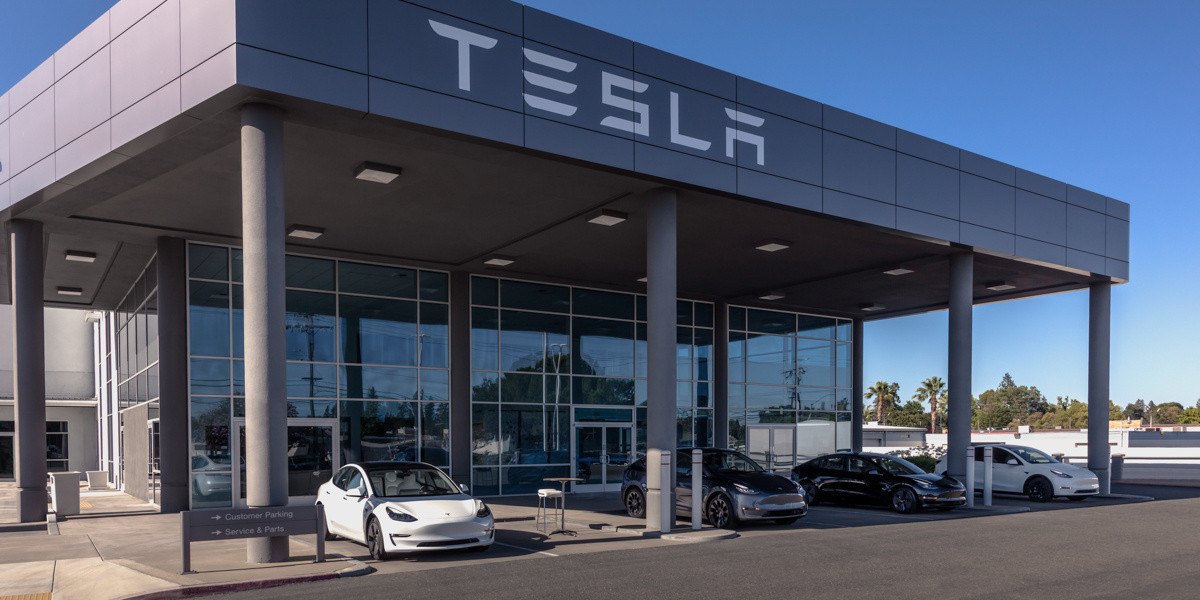
Tesla’s Board of Directors has proposed a new pay package for company CEO Elon Musk that would result in $1 trillion in stock offerings if he is able to meet several lofty performance targets.
Musk, who has not been meaningfully compensated since 2017, completed his last pay package by delivering billions in shareholder value through a variety of performance-based “tranches,” which were met and resulted in the award of billions in stock.
Elon Musk’s new pay plan ties trillionaire status to Tesla’s $8.5 trillion valuation
However, Musk was unable to claim this award due to a ruling by the Delaware Chancery Court, which deemed the payout an “unfathomable sum.”
Now, the company is taking steps to ensure Musk gets paid, as the Board feels that it is crucial to retain its CEO, who has been responsible for much of the company’s success.
This is not a statement to undermine the work of all of Tesla’s terrific employees, but a ship needs to be captained by someone, and Musk has proven he is the right person for the job.
The Board also believes that, based on a statement made by the company in its proxy, various issues will be discussed during the upcoming Shareholder Meeting.
Robyn Denholm and Kathleen Wilson-Thompson recognized Musk’s contributions in a statement, which encouraged shareholders to vote to approve the payout:
“We’re asking you to approve the 2025 CEO Performance Award. In designing the new performance award, we explored numerous alternatives. Ultimately, the new award aims to build upon the success of the 2018 CEO Performance Award framework, which ensure that Elon was only paid for the performance delivered and incentivized to guide Tesla through a period of meteoric growth. The 2025 CEO Performance Award similarly challegnes Elon to again meet a series of even more aspirational goals, including operational milestones focused on reaching Adjusted EBITDA targets (thresholds that are up to 28 times higher than the 2108 CEO Performance Award’s top Adjusted EBITDA milestone) and rolling out new or expanded product offerings (including 1 million Robotaxis in commercial operation and delivery of 1 million AI Bots), all while growing the company’s market capitalization by trillions of dollars.
Yes, you read that correctly: in 2018, Elon had to grow Tesla by billions; in 2025, he has to grow Tesla by trillions — to be exact, he must create nearly $7.5 trillion in value for shareholders for him to receive the full award.
In addition to these unprecedented performance milestones, the 2025 CEO Performance Award also includes innovative structural features, born out of the special committee’s considered analysis and extensive shareholder feedback. These features include supercharged retention (at least seven and a half years and up to 10 years to vest in the full award), structural protections to minimize stock price volatility due to administration of this award and, thereafter, incentives for Elon to participate in the Board’s continued development of a framework for long-term CEO Succession. If Elon achieves all the performance milestones under this principle-based 2025 CEO Performance Award, his leadership will propel Tesla to become the most valuable company in history.”
Musk will have a lot of things to accomplish to receive the 423,743,904 shares, which are divided into 12 tranches.
However, the Board feels he is the right person for the job, and they want him to remain the CEO. This package should ensure that he stays with Tesla, as long as shareholders feel the same way.
Investor's Corner
Elon Musk’s new pay plan ties trillionaire status to Tesla’s $8.5 trillion valuation
Shareholders are expected to vote on the proposal at the annual meeting on November 6.
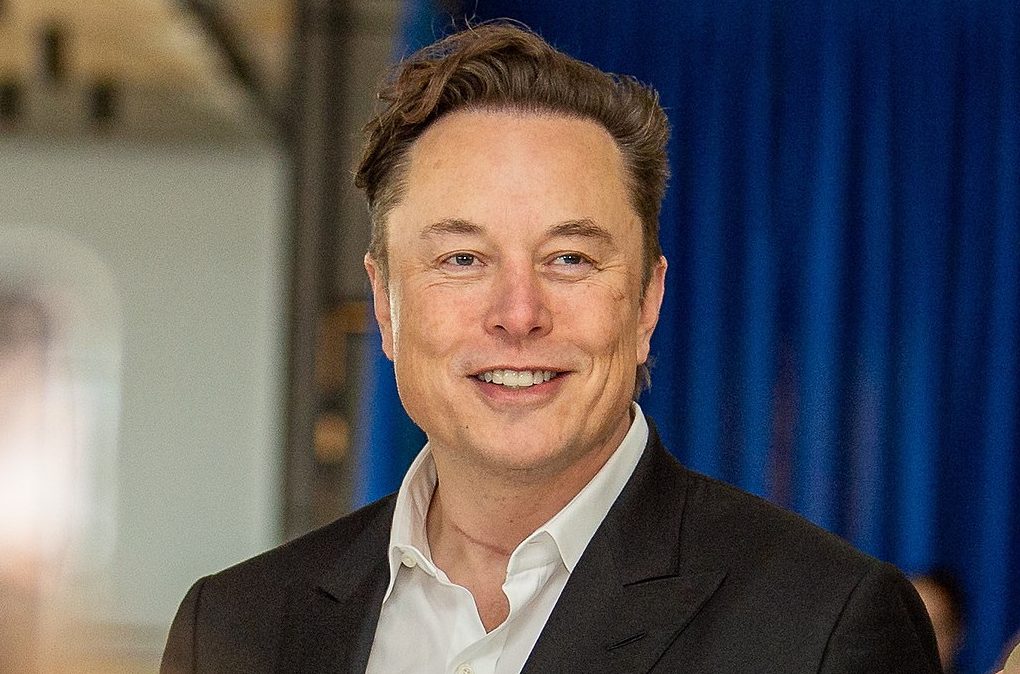
Tesla’s board has proposed a new compensation package for CEO Elon Musk that could make him the world’s first trillionaire and Tesla the most valuable company in history.
The 2025 CEO Performance Award, outlined in a securities filing on Friday, would be worth up to $900 billion in Tesla stock (NASDAQ:TSLA) if the automaker achieves a series of aggressive performance and valuation goals, according to the New York Times.
Shareholders are expected to vote on the proposal at the annual meeting on November 6.
Tesla is aiming for an insane $8.5 trillion market cap
The package requires Musk to lift Tesla’s market capitalization from about $1.1 trillion today to $8.5 trillion over the next decade. At that level, Tesla would surpass every major public company in existence. Nvidia, currently the world’s most valuable firm, has a market cap of around $4.2 trillion today, as noted in a Motley Fool report. Microsoft and Apple follow at $3.8 and 3.6 trillion each, while Saudi Aramco is valued at around $1.5 trillion.
If Tesla achieves its $8.5 trillion target, it would be worth more than twice Nvidia’s present valuation and nearly eight times its current size. The compensation plan also requires Tesla’s operating profit to grow from $17 billion last year to $400 billion annually.
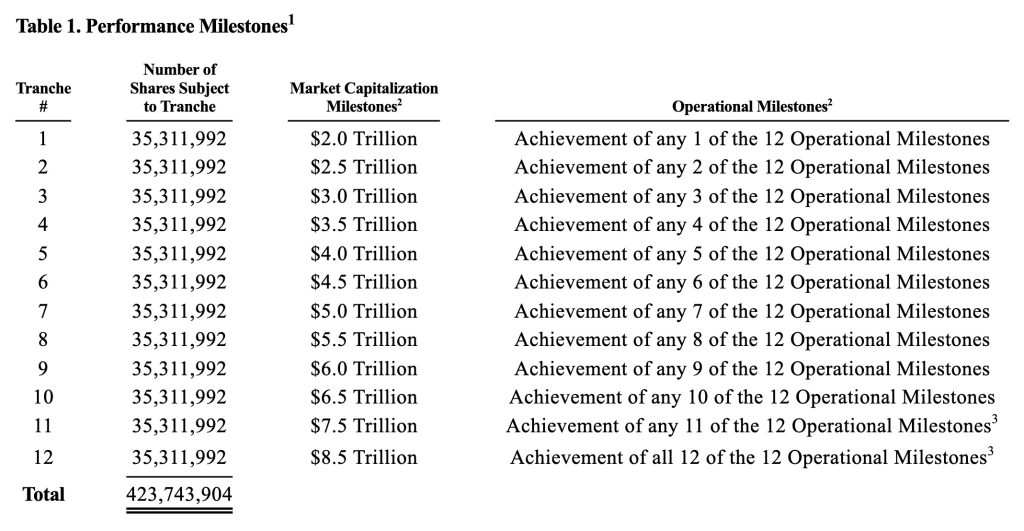
Elon Musk’s path to a trillionaire status
Apart from leading Tesla to become the world’s biggest company in history, Musk is also required to hit several product targets for the electric vehicle maker. These include the delivery of 20 million Tesla vehicles cumulatively, 10 million active FSD subscriptions, 1 million Tesla bots delivered, and 1 million Robotaxis in operation.
Tesla board chair Robyn Denholm and director Kathleen Wilson-Thompson said retaining Musk is “fundamental to Tesla achieving these goals and becoming the most valuable company in history.” If successful, the plan would raise Musk’s Tesla stake from 13% to about 25%, further consolidating his control. It would also result in the CEO earning $900 billion in TSLA stock, allowing him to effectvely become a trillionaire.
The proposal mirrors a 2018 compensation plan that was invalidated in Delaware court earlier this year in the way that it is focused on very aggressive targets and operational milestones. Tesla has since shifted its corporate registration to Texas, where challenges from potential activist shareholders are less of a risk.
Tesla’s SEC filing can be viewed below.
www-sec-gov-Archives-edgar-data-1318605-000110465925087598-tm252289-4_pre14a-htm… by Simon Alvarez
Investor's Corner
Shareholder group urges Nasdaq probe into Elon Musk’s Tesla 2025 CEO Interim Award
The SOC Investment Group represents pension funds tied to more than two million union members, many of whom hold shares in TSLA.
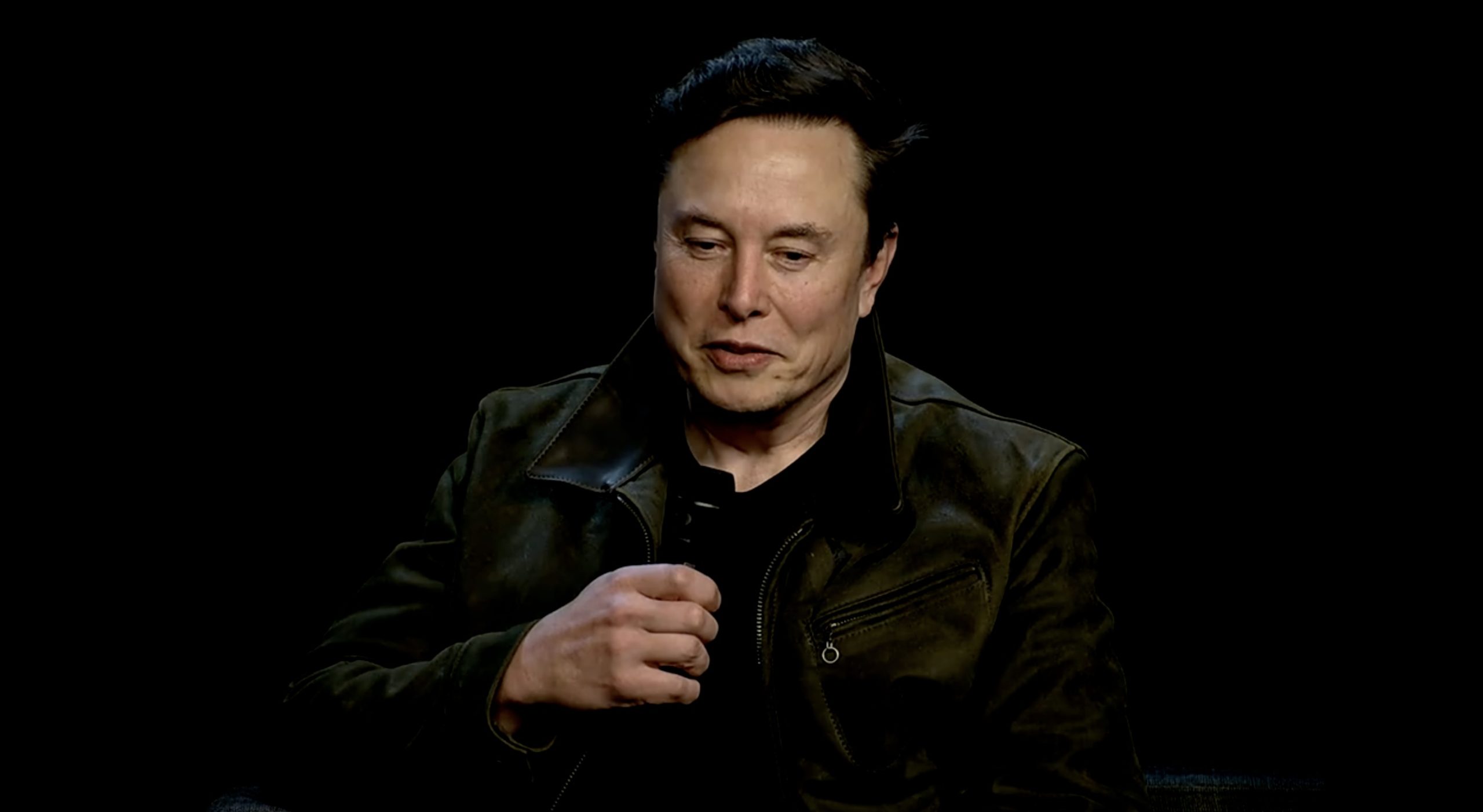
An investment group is urging Nasdaq to investigate Tesla (NASDAQ:TSLA) over its recent $29 billion equity award for CEO Elon Musk.
The SOC Investment Group, which represents pension funds tied to more than two million union members—many of whom hold shares in TSLA—sent a letter to the exchange citing “serious concerns” that the package sidestepped shareholder approval and violated compensation rules.
Concerns over Tesla’s 2025 CEO Interim Award
In its August 19 letter to Nasdaq enforcement chief Erik Wittman, SOC alleged that Tesla’s board improperly granted Musk a “2025 CEO Interim Award” under the company’s 2019 Equity Incentive Plan. That plan, the group noted, explicitly excluded Musk when it was approved by shareholders. SOC argued that the new equity grant effectively expanded the plan to cover Musk, a material change that should have required a shareholder vote under Nasdaq rules.
The $29 billion package was designed to replace Musk’s overturned $56 billion award from 2018, which the Delaware Chancery Court struck down, prompting Tesla to file an appeal to the Delaware Supreme Court. The interim award contains restrictions: Musk must remain in a leadership role until August 2027, and vested shares cannot be sold until 2030, as per a Yahoo Finance report.
Even so, critics such as SOC have argued that the plan does not have of performance targets, calling it a “fog-the-mirror” award. This means that “If you’re around and have enough breath left in you to fog the mirror, you get them,” stated Brian Dunn, the director of the Institute for Comprehension Studies at Cornell University.
SOC’s Tesla concerns beyond Elon Musk
SOC’s concerns extend beyond the mechanics of Musk’s pay. The group has long questioned the independence of Tesla’s board, opposing the reelection of directors such as Kimbal Musk and James Murdoch. It has also urged regulators to review Tesla’s governance practices, including past proposals to shrink the board.
SOC has also joined initiatives calling for Tesla to adopt comprehensive labor rights policies, including noninterference with worker organizing and compliance with global labor standards. The investment group has also been involved in webinars and resolutions highlighting the risks related to Tesla’s approach to unions, as well as labor issues across several countries.
Tesla has not yet publicly responded to SOC’s latest letter, nor to requests for comment.
The SOC’s letter can be viewed below.
-

 News1 week ago
News1 week agoTesla is overhauling its Full Self-Driving subscription for easier access
-
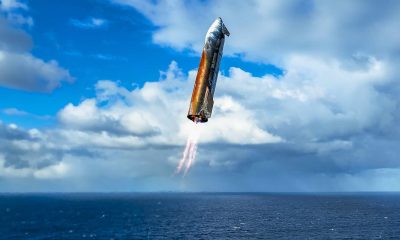
 Elon Musk1 week ago
Elon Musk1 week agoElon Musk shares unbelievable Starship Flight 10 landing feat
-
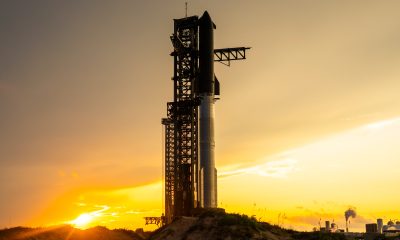
 Elon Musk1 week ago
Elon Musk1 week agoElon Musk reveals when SpaceX will perform first-ever Starship catch
-
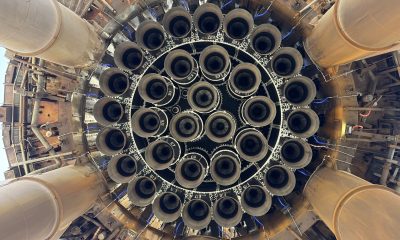
 Elon Musk1 week ago
Elon Musk1 week agoSpaceX Starship Flight 10 was so successful, it’s breaking the anti-Musk narrative
-

 Elon Musk3 days ago
Elon Musk3 days agoTesla’s next-gen Optimus prototype with Grok revealed
-
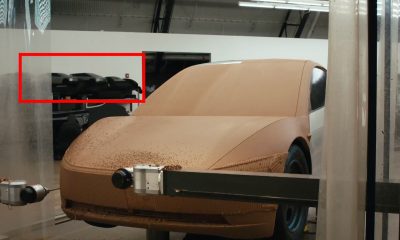
 News5 days ago
News5 days agoTesla appears to be mulling a Cyber SUV design
-
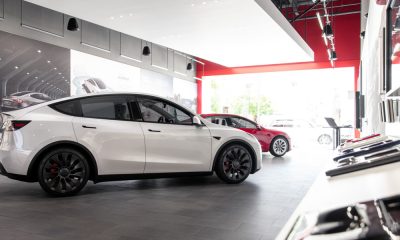
 News1 week ago
News1 week agoTesla expands crazy new lease deal for insane savings on used inventory
-
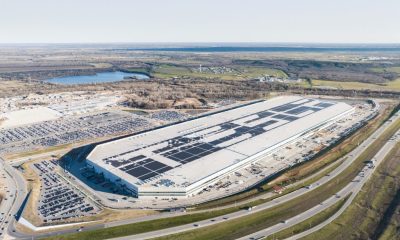
 News1 week ago
News1 week agoTesla talks Semi ramp, Optimus, Robotaxi rollout, FSD with Wall Street firm


